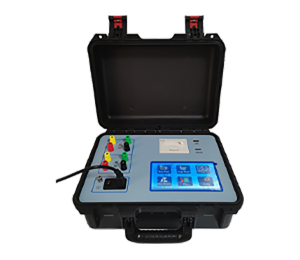 English
English


partial discharge test of current transformer
Partial Discharge Testing of Current Transformers
Partial discharge (PD) testing is a critical diagnostic technique used to evaluate the insulation integrity and reliability of electrical apparatus, including current transformers (CTs). Current transformers are essential components in electrical power systems, as they provide accurate current measurement and protection for various applications. However, they can be susceptible to insulation failures which may compromise their performance and lead to significant operational issues.
Partial discharge refers to localized electrical discharges that occur within the insulating material, while not bridging the entire insulation. These discharges can lead to degradation of the insulation over time, and if left undetected, can result in catastrophic failures. Therefore, PD testing is essential for early detection and rectification of potential problems.
The process of PD testing in current transformers involves applying a high-voltage AC signal to the insulation system while monitoring for any discharges. This is typically done in a controlled environment, such as a laboratory or specialized testing facility. During the test, sensors are used to capture electrical signals indicative of partial discharges. The data collected can highlight the presence of any defects in the insulation material, such as air pockets, voids, or cracks.
partial discharge test of current transformer

One of the primary advantages of PD testing is its ability to detect faults before they escalate into major issues. By identifying areas of weakness in the insulation, maintenance teams can take proactive measures, such as repair or replacement, thereby minimizing the risk of transformer failure. This proactive approach not only enhances the operational reliability of power systems but also contributes to safety and cost savings by preventing unplanned outages.
Moreover, PD testing can be performed at various stages of a current transformer’s lifecycle—during manufacturing, after installation, and throughout its operational life. Regular monitoring enables operators to establish a baseline of the transformer’s condition, making it easier to detect changes over time.
In conclusion, partial discharge testing is a vital practice in the maintenance and management of current transformers. By facilitating the early detection of insulation defects, it helps ensure the longevity and reliability of these critical components in power systems. As infrastructure demands continue to grow, the importance of effective diagnostic techniques like PD testing will undoubtedly play a crucial role in maintaining operational efficiency and safety in the electrical industry.
-
Differences between open cup flash point tester and closed cup flash point testerNewsOct.31,2024
-
The Reliable Load Tap ChangerNewsOct.23,2024
-
The Essential Guide to Hipot TestersNewsOct.23,2024
-
The Digital Insulation TesterNewsOct.23,2024
-
The Best Earth Loop Impedance Tester for SaleNewsOct.23,2024
-
Tan Delta Tester--The Essential Tool for Electrical Insulation TestingNewsOct.23,2024





